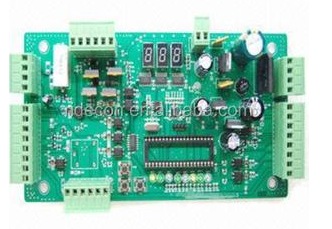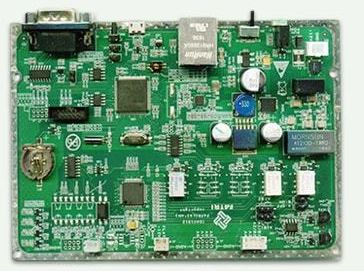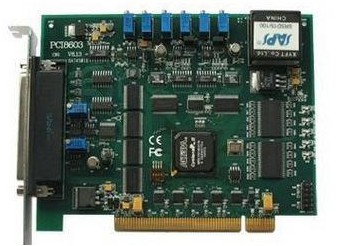
With the development of communication technology, hand-held radio frequency circuit technology is used more and more widely, such as wireless pager, mobile phone, wireless PDA, etc. The performance index of the radio frequency circuit directly affects the quality of the entire product. One of the biggest characteristics of these handheld products is miniaturization, which means that the density of components is very high, which makes the mutual interference between components (including SMD, SMC, bare chips, etc.) very prominent. If the EMI signal is not handled properly, the whole circuit system may not work properly. Therefore, how to prevent and suppress EMI and improve EMC has become a very important topic when designing RF circuit PCB. The performance indicators of the same circuit with different PCB design structures will vary greatly. In this discussion, when using Protel99 SE software to design the radio frequency circuit PCB of handheld products, if we maximize the performance indicators of the circuit, we can meet the requirements of electromagnetic compatibility.
1 Selection of sheet

Substrates of printed circuit boards include organic and inorganic materials. The most important property in the substrate is the dielectric constant ε r. Dissipation factor (or dielectric loss) tan δ、 Thermal expansion coefficient CET and moisture absorption rate. among ε R affects circuit impedance and signal transmission rate. For high-frequency circuits, the dielectric constant tolerance is the most important factor to be considered, and the substrate with small dielectric constant tolerance should be selected.
2 PCB design process
Since the use of Protel99 SE software is different from Protel 98 and other software, the process of PCB design using Protel99 SE software is briefly discussed.
① Because Protel99 SE adopts the project database mode management, which is implicit under Windows 99, a database file should be created first to manage the designed circuit schematic diagram and PCB layout.
② Schematic design. In order to realize network connection, all components used in the principle design must exist in the component library, otherwise, the required components should be made in SCHLIB and stored in the warehousing file. Then, just call the required components from the component library and connect them according to the designed circuit diagram.
③ After the schematic design is completed, a network table can be formed for PCB design.
④ PCB design
a. Determination of PCB shape and size. The shape and size of the PCB are determined according to the position of the designed PCB in the product, the size and shape of the space, and the fit with other components. On the MECHANICAL LAYER layer, use the PLACE TRACK command to draw the outline of the PCB. b. According to the requirements of SMT, make positioning holes, vision eyes, reference points, etc. on the PCB. c. Manufacturing of components. If you need to use some special components that do not exist in the component library, you need to make components before layout. The process of making components in Protel99 SE is relatively simple. Select the "MAKE LIBRARY" command in the "DESIGN" menu to enter the component making window, and then select the "NEW COMPONENT" command in the "TOOL" menu to design components. At this time, it is only necessary to draw the corresponding pad at a certain position in the TOP LAYER layer with the PLACE PAD and other commands according to the shape and size of the actual components, and edit it into the required pad (including the pad shape, size, inner diameter size and angle, and also mark the corresponding pin name of the pad), then draw the maximum shape of the components in the TOP OVERLAYER layer with the PLACE TRACK command, and take a component name and store it in the component library. d. After the components are made, the layout and wiring will be carried out. These two parts will be discussed in detail below. e. The above process must be checked after completion. On the one hand, it includes checking the circuit principle, on the other hand, it must also check the matching and assembly problems. The circuit principle can be checked manually or automatically by network (the network formed by the schematic diagram can be compared with the network formed by PCB). f. After checking, archive and output the files. In Protel99 SE, you must use the "EXPORT" command in the "FILE" option to save the file to the specified path and file (the "IMPORT" command calls a file into Protel99 SE). Note: After the command "SAVE COPY AS..." in the "FILE" option of Protel99 SE is executed, the selected file name is invisible in Windows 98, so the file cannot be seen in the Explorer. This is not exactly the same as the "SAVE AS..." function in Protel 98.
3 Layout of components
Because SMT generally uses infrared furnace heat flow welding to realize the welding of components, the layout of components affects the quality of solder joints, and then affects the yield of products. For the design of RF circuit PCB, EMC requires that each circuit module should not generate electromagnetic radiation as much as possible, and have a certain ability to resist electromagnetic interference. Therefore, the layout of components also directly affects the interference and anti-interference ability of the circuit itself, which also directly affects the performance of the designed circuit. Therefore, when designing the RF circuit PCB, in addition to the layout of ordinary PCB design, it is also necessary to consider how to reduce the mutual interference between various parts of the RF circuit, how to reduce the interference of the circuit itself to other circuits, and the anti-interference ability of the circuit itself. According to experience, the effect of RF circuit depends not only on the performance index of RF circuit board itself, but also on the interaction with CPU processing board. Therefore, reasonable layout is particularly important in PCB design.
General layout principle: components should be arranged in the same direction as far as possible, and poor soldering can be reduced or even avoided by selecting the direction of PCB entering the tin melting system; According to experience, the distance between components should be at least 0.5mm to meet the requirements for tin melting of components. If the space of PCB board allows, the distance between components should be as wide as possible. For double-sided boards, one side should be designed as SMD and SMC components, and the other side as discrete components.
Attention shall be paid in the layout:
*First, determine the position of the interface components with other PCB boards or systems on the PCB, and pay attention to the coordination between the interface components (such as the direction of the components).
*Because the size of handheld devices is very small, and the arrangement of components is very compact, for larger components, priority must be given to determine the corresponding location and consider the coordination between them.
*Carefully analyze the circuit structure, process the circuit in blocks (such as high-frequency amplification circuit, frequency mixing circuit, demodulation circuit, etc.), try to separate the strong current signal from the weak current signal, separate the digital signal circuit from the analog signal circuit, and try to arrange the circuits that complete the same function within a certain range to reduce the signal loop area; The filter network of each part of the circuit must be connected nearby, which can not only reduce the radiation, but also reduce the probability of being interfered.
*The unit circuits are grouped according to their sensitivity to electromagnetic compatibility in use. The components in the circuit vulnerable to interference should also be arranged to avoid interference sources (such as interference from the CPU on the data processing board).
4 Wiring
After the layout of components is basically completed, the wiring can be started. The basic principle of wiring is to select low-density wiring design as far as possible after the assembly density permits, and the signal wiring should be as thick and thin as possible, which is conducive to impedance matching.
For RF circuits, the unreasonable design of the direction, width and spacing of signal lines may cause cross interference between signal transmission lines; In addition, the system power supply itself also has noise interference, so when designing the RF circuit PCB, it must be comprehensively considered and reasonably wired.
During wiring, all wiring shall be far away from the frame of PCB board (about 2mm) to avoid potential wire breakage or breakage during PCB board fabrication. The power line shall be as wide as possible to reduce the loop resistance. At the same time, the direction of power line and ground wire shall be consistent with the direction of data transmission to improve the anti-interference capability; The signal wires shall be as short as possible and the number of vias shall be minimized; The shorter the connection between components, the better, to reduce the distribution parameters and mutual electromagnetic interference; The incompatible signal lines shall be far away from each other, and parallel routing shall be avoided as far as possible, while the signal lines on both sides of the positive direction shall be perpendicular to each other; During wiring, 135 ° angle should be used at the address where corner is required to avoid turning right angles.
When PCB wiring, the line directly connected to the bonding pad should not be too wide, and the routing should be as far away from the unconnected components as possible to avoid short circuit; The vias are not painted on the components and should be as far away from the disconnected components as possible to avoid false soldering, continuous soldering, short circuit and other phenomena in production.
In the design of RF circuit PCB, the correct wiring of power line and ground line is particularly important. Reasonable design is the most important means to overcome electromagnetic interference. Quite a few interference sources on PCB are generated by power supply and ground wire, among which ground wire causes the most noise interference.
The main reason why the ground wire is easy to form electromagnetic interference is that the ground wire has PCB impedance. When a current flows through the ground wire, it will generate voltage on the ground wire, thus generating the loop current of the ground wire and forming the loop interference of the ground wire. When multiple circuits share a section of ground wire, a common impedance coupling will be formed, thus producing the so-called ground wire noise. Therefore, when wiring the ground wire of the RF circuit PCB, you should do the following:
*First of all, the circuit is processed in blocks. The RF circuit can basically be divided into high-frequency amplification, mixing, demodulation, local oscillator and other parts. A common potential reference point, that is, the ground wire of each module circuit, should be provided for each circuit module, so that signals can be transmitted between different circuit modules. Then, it is summarized at the place where the RF circuit PCB is connected to the ground wire, that is, the ground wire. Since there is only one reference point, there is no common impedance coupling, so there is no mutual interference problem.
*The ground wire of the digital area and the analog area shall be isolated as far as possible, and the digital ground shall be separated from the analog ground, and finally connected to the power ground.
*The ground wire inside each part of the circuit should also pay attention to the principle of single point grounding, minimize the area of the signal loop, and connect to the address of the corresponding filter PCB circuit nearby.
*If space allows, it is better to isolate each module with ground wire to prevent mutual signal coupling effect.
5 Conclusion
The key of RF circuit PCB design is how to reduce the radiation ability and how to improve the anti-interference ability. Reasonable layout and wiring is the guarantee of RF circuit PCB design. The method described in this paper is conducive to improving the reliability of RF circuit PCB design, solving the problem of electromagnetic interference, and achieving the purpose of electromagnetic compatibility.







